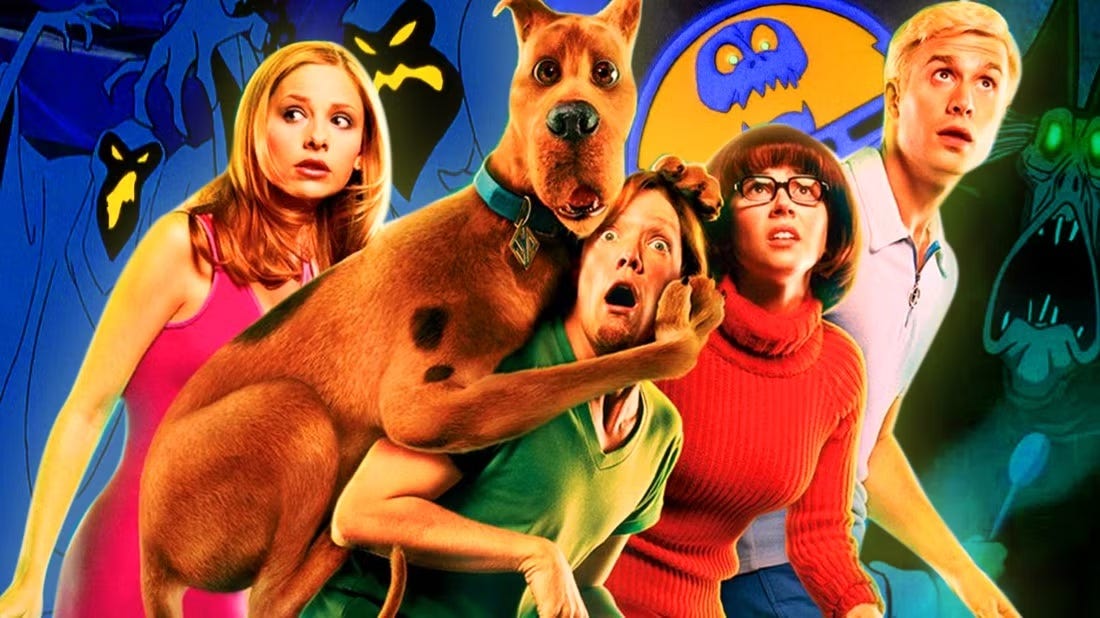ZOINKS! A Gentle Introduction to Ghosts & Monsters
Scooby-Doo Turns 56
On a Saturday morning in September of 1969, a knight in battered armor lumbered out of a museum—and into television history. The episode was “What a Night for a Knight,” the premiere of Scooby-Doo, Where Are You! on CBS. It would go on to launch not just a beloved cartoon, but an entire mythology of masked villains, spooky mansions, one groovy van, and sandwich-based courage.
I was too young to remember that original broadcast. But reruns were a steady hum in the background of my childhood, and the later episodes—aired under the CBS umbrella until 1976—were essential viewing. An early memory is calling Saturday “Cartoon Day” due to my passion for cartoons, but one show clearly stood at the top.
Even as a kid, I could sense the show belonged to a particular moment in time: the color palette was saturated with '70s earth tones, the music was suspiciously catchy, and the monsters always turned out to be someone you’d already met. I adored it.
I wasn't watching for plot complexity or high-stakes drama. I was watching because Shaggy and Scooby made me laugh. I was watching because Velma always saw what others missed. I was watching because it felt good to be scared in a safe way. Scooby-Doo was my first introduction to ghosts, monsters, and the macabre. It was gentle and just spooky enough to tickle the spine without sending me running for the lights. Plus, Scooby-Doo remains my only decent vocal imitation to this day.
Here’s the twist: Scooby-Doo didn’t just make me laugh and shiver—it made me think. Somewhere between the creaky, haunted amusement parks and the howling werewolves, the show planted the idea that things are not always what they seem. The ghosts were never really ghosts. The vampires were just real estate developers with a grudge. And the monster under the bed? Usually a guy in a mask trying to scam someone out of money. What a marvelous introduction to critical thinking: look closer, ask questions, follow the clues, and don’t fall for what some adult claims to be true.
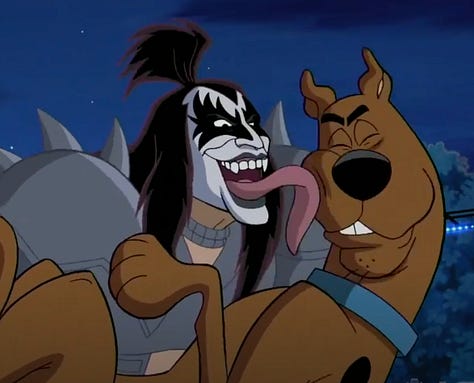

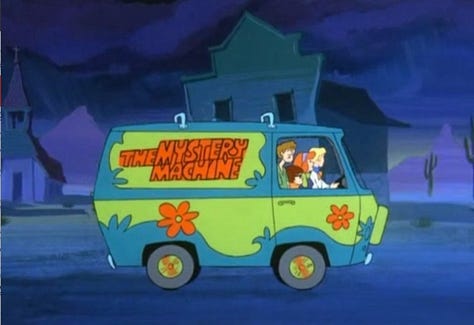
The CBS years (1969–1976) were the golden age of the series. That’s when the formula was fresh, the monsters were plentiful, and the music was, well, groovier than it had any right to be. Remember those musical interludes that would kick in during chase scenes? Psychedelic pop tracks with nonsensical lyrics and swirling guitars, always timed perfectly to someone running from a mummy. As a kid, I didn’t know what genre it was. I just knew I loved it.
And of course, there was the Mystery Machine. That van was more than transportation. It was freedom. It was a portable clubhouse, a tour bus, a refuge. If Scooby-Doo was the gateway to mystery, the Mystery Machine was the getaway car. It was iconic, as much a part of the show’s identity as Fred’s ascot or Velma’s glasses. (Editor’s note from Taryn: After getting glasses in the 2nd grade, Velma losing hers was the scariest part of the show for me—a recurring trope starting with the very first episode!) I also remember being gobsmacked to learn that Casey Kasem—of “America’s Top 40 fame”—was the voice of Shaggy!
The show’s eeriness owes as much to its painted worlds as to its plotting. Fog-choked mansions and windswept shorelines were hand-painted tableaux. A key spark came from ex-Disney stylist Walt Peregoy, whose work in the late '60s brought a modernist, color-first sensibility (he’d earlier been color stylist on One Hundred and One Dalmatians and contributed to Sleeping Beauty) and who helped set the visual tone for the show’s first outings. Hanna-Barbera’s background crew kept that standard alive across episodes, crafting atmospheres that often outshone the deliberately simple character animation, and which are a big reason the series still looks so distinct today.
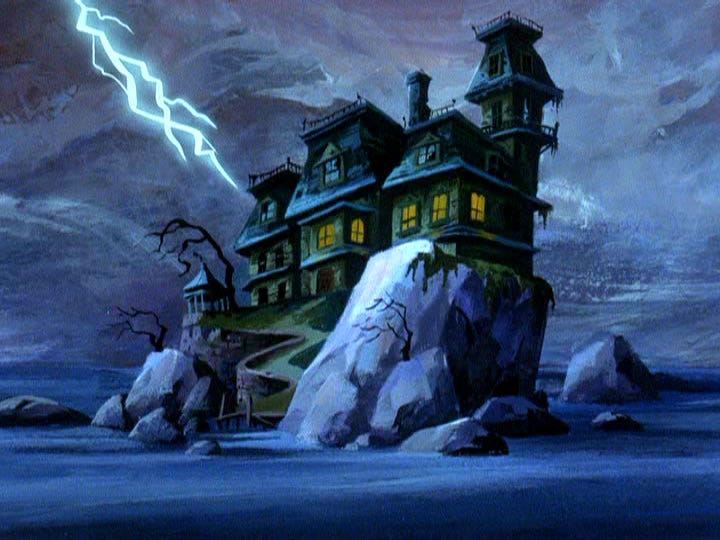
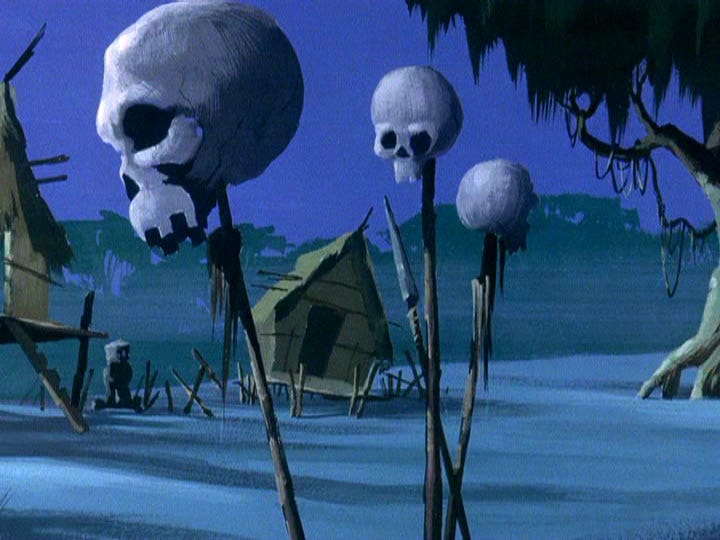
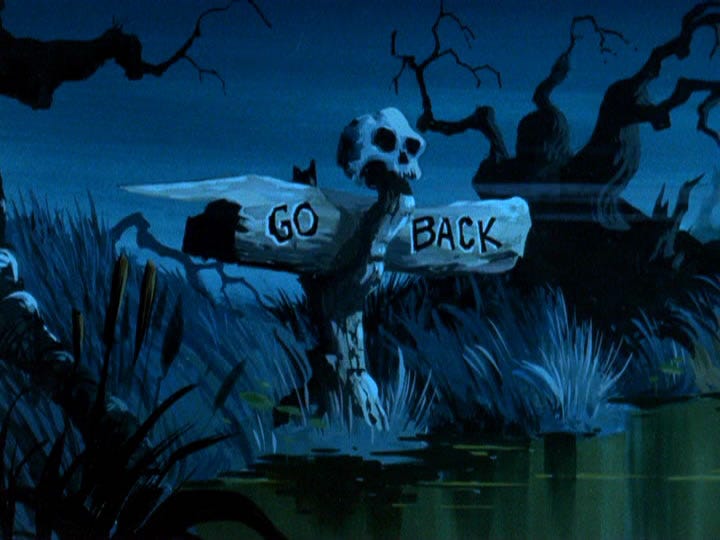
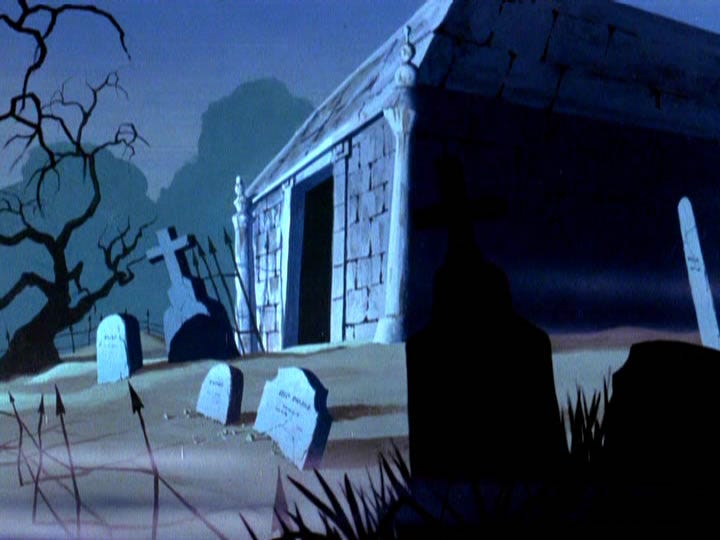
But like many childhood loves, Scooby-Doo changed. When the show moved to ABC, it took on new forms. The Scooby-Doo Show; The 13 Ghosts of Scooby-Doo; What’s New, Scooby-Doo?; and dozens more filled the years. And do we even need to mention Scrappy-Doo? To some, he was a breath of fresh air. To me, he was a storm of chaos in a show I once found cozy. The tone shifted, the humor got louder and the charm got harder to find. (In other words, Scrappy sucked.)
Still, the mystery endured. Even if later iterations lost the original balance of spooky and silly, the DNA remained: friendship, food, and fear you could laugh at. I never expected to enjoy the live-action 2002 movie, but I did. Freddie Prinze Jr., Sarah Michelle Gellar, Matthew Lillard, and Linda Cardellini didn’t just cosplay the characters, they embodied them. Lillard, especially, was Shaggy, down to the stoner nerves and snack-fueled heroism. The movie recaptured some of that original magic: monsters with rubber faces, meddling kids with good hearts, and a dog who could outsmart them all—as long as there were snacks involved.
Scooby-Doo turns 56 this year. That’s older than Shaggy ever acted and nearly old enough to collect a pension. But the show’s legacy isn’t just nostalgia. It’s the way it introduced millions of kids—like me—to the joy of a good scare, the logic behind a mystery, and the comfort of knowing that, in the end, the monster is just a person, and the people who care about you will stick around, no matter how dark the hallway gets.
Not bad for a dog who could barely talk.
Top 3 Classic Scooby-Doo Episodes
The creepiest, kookiest, most haunted mysteries from the CBS era.
3. “What the Hex Going On?” (aka “The Ghost of Elias Kingston”) (1969)
A levitating, cackling green ghost haunting an old mansion and scheming over a will? This is classic Scooby featuring a crypt, a secret room, and crystallomacy.
Most Chilling Moment: The ghost gliding through a wall like it pays no mind to physics—or courtesy.
2. “Bedlam in the Big Top” (1969)
An abandoned circus and a ghost clown who hypnotizes people into paralysis. If that doesn’t ruin balloons for you, nothing will.
Most Chilling Moment: “You will pay attention for a time... and soon your thoughts shall all be mine,” said a clown with no known mercy.
1. “The Backstage Rage” (1969)
An empty theater. A crooked puppet master. Violins playing themselves. This one is pure gothic dread dressed in velvet and marionette strings.
Most Chilling Moment: The puppets move—and no one is holding the strings.
Tell us your favorite episode(s) of the classic Scooby series!




